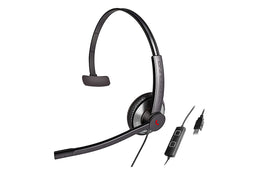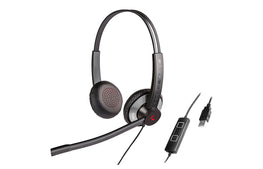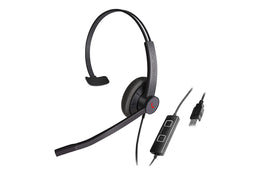
How voice recognition software can reduce wait times for patients
In the realm of the medical professional, there are few recurring issues which can affect patient care as significantly as clinic and hospital wait times. Whether at a general practice level, or all the way up to the most highly specialised surgical procedures, reducing patient wait times is crucial for delivering more effective care, and even saving lives.
Finding the root cause for extended patient wait times is not easy – it's an issue that the health care industry, not to mention both the federal and state governments, are working hard to control at every turn. It's indisputable, however, that wait times in some regions of Australia can be very long, leading to people neglecting to visit a health professional when illness strikes.
Data from the National Health Performance Survey shows that in some areas, particularly regional and rural communities of NSW and Western Australia, as many as 38 per cent of patients reported having to wait too long to see a doctor.
While patient waiting times are a complex and multifaceted issue, there are technological solutions, such as dictation software, that can be deployed to streamline the day-to-day administration of a practice.
The consequences of waiting
In 2013, a detailed study was carried out by The Fraser Institute in Canada into the impacts on patients of extended wait times. The report yielded some troubling (although unsurprising) results, finding long wait times led to a number of further maladies, not all of them medical. Patients who were not seen in a timely fashion were susceptible to:
- an increased risk of adverse health events;
- potentially chronic addictions to painkillers and narcotics;
- lost productivity and reduced enjoyment of life;
- substantial monetary costs of waiting for health care.
Here in Australia, the situation appears to be worsening. In their December 2014 study measuring and comparing the wait times across OECD countries, the Health Policy Journal found that the median waiting times throughout the nation were steadily increasing, as much as 58 per cent for some specific conditions in the decade to 2012.
Reducing the waiting times for patients should not come from cutting the length of each individual visit, but from minimising the time spent on notes and admin in between visits. That's where modern voice recognition software like Dragon Medical Practice Edition 3 can help – by greatly reducing the time it takes to compose patient notes.
Bringing digital technology into the health care space
Through modern means, more and more people are keeping a closer eye on their own health than ever before. Whether it is from fitness and activity trackers, smartwatches or smartphone applications, the 21st century health consumer is more engaged and knowledgeable, and in some cases more demanding of their medical professionals.
The smart implementation of administration technology is making it easier for patients to access their doctors, and the younger generation, in particular, have embraced this opportunity. A recent survey carried out by McKinsey & Company queried participants about their use of technology to communicate with their doctor. The research found people aged 18 to 34 were most likely to report using technology in the management of their health care needs.
Yet, what is somewhat surprising is the number of older people – aged 65 and older – who also reported their use of technology. McKinsey & Company found that 65 per cent of participants in this bracket felt that using websites and apps to communicate with their doctor was more effective than phone or in-person communication.
Clearly a large percentage of patients are improving their own health care management through the implementation of modern digital technology, so it stands to reason that medical practitioners themselves should be following suit.
What changes can be made?
In July 2015, KPMG released the What Works: Paths to Population Health report, which outlines some proposed methods to adapt to the changing health needs of the world's population. While the report covered an array of aspects to global health care, of particular note is the chapter on the implementation of new technologies in the way medical professions deal with patient data.
KPMG's report speaks to the importance of having a coordinated method of capturing, aggregating and sharing patient information – among the most crucial aspects of administration for any doctors. The ability to quickly access patient records and notes from previous visits, whether made by yourself or a colleague, is just one example of a real-world application of having a standardised patient notetaking system.
Picture a scenario where an entire history of patient consultations, possibly stretching back many years, can be easily recalled on your computer, in a format integrated into whatever software you choose. That's what KPMG sees as the necessary future of medical record management, a future that starts with Dragon Medical Practice Edition 3.
Using Dragon Medical 3 to reduce wait times
The key to a successful medical practice, with waiting times as low as possible, lies in efficiency. Maintaining a consistent (or potentially higher) level of patient care is obviously the priority, so finding ways to reduce the demands on your time between consultations is the best way to squeeze those extra minutes out of each day.
With Dragon Medical 3, you can make a serious impact on your regular notetaking and dictation schedule. The sophisticated voice recognition technology, coupled with an extensive medical vocabulary built into the product, effectively eliminates the need for hand-written patient notes.
Those hours saved from transcribing notes mean more time is available in your day to spend with patients. It can even free you from dealing with paperwork outside of your regular clinic hours.
The future of every medical profession will be marked by constant improvements in technology, from the direct consultation and treatment level to the most menial administrative tasks. Adapting and integrating your practice to a voice recognition system such as Dragon Medical 3 is a great first step to reducing patient wait times and improving your level of care.
The post How voice recognition software can reduce wait times for patients appeared first on Speech Recognition Blog.






